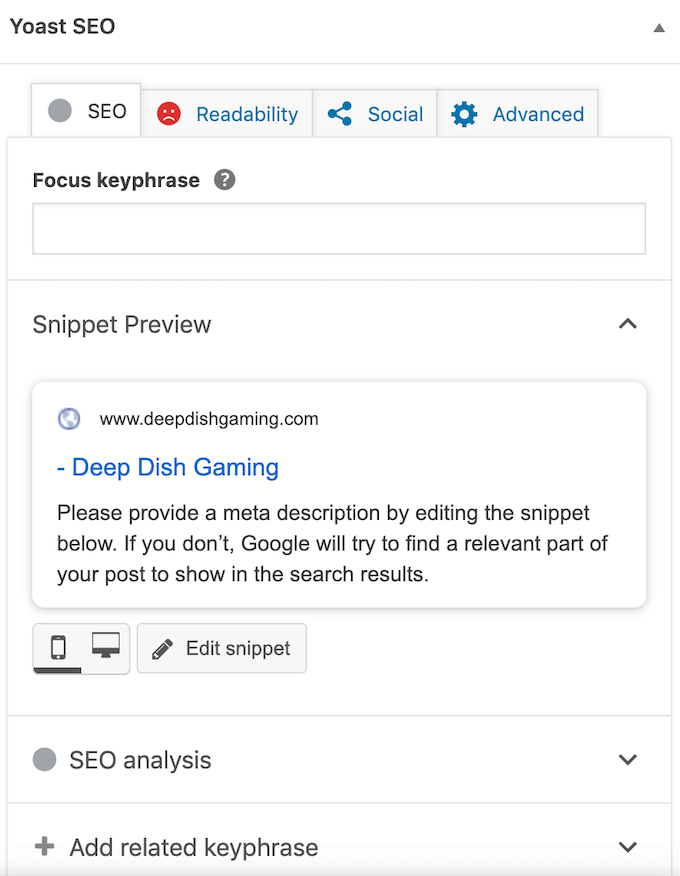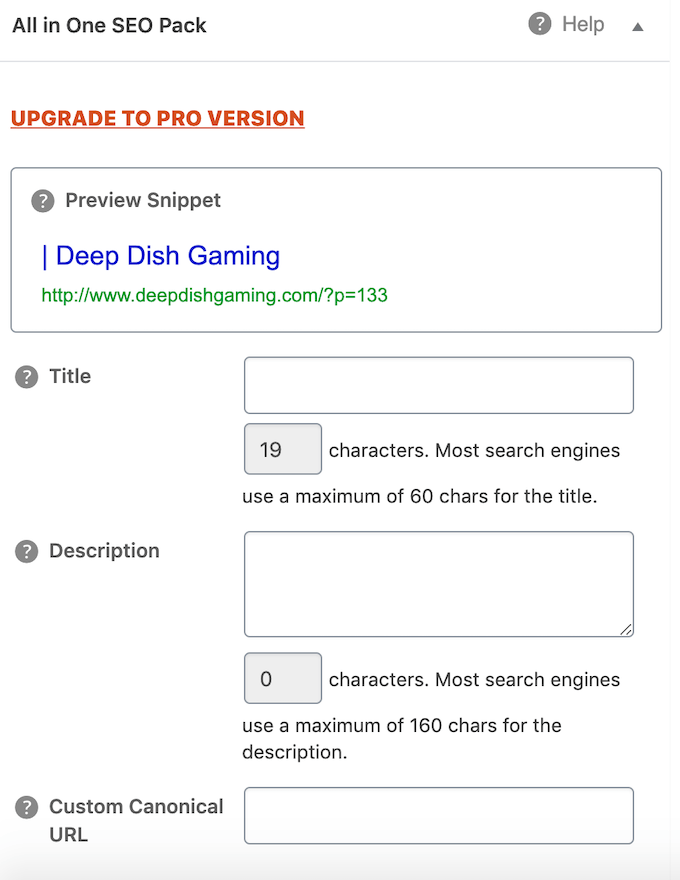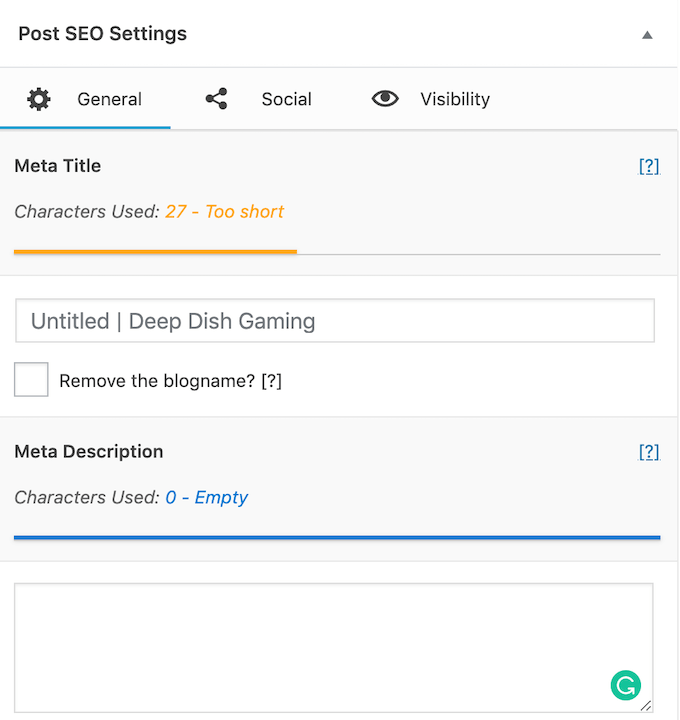It involves optimizing a page through the proper use of keywords, backlinks, quality content, and a dozen other factors that change every single time Google updates their algorithms.
People spend years trying to suss out the best way to rank in Google, but SEO best practices change so often that it’s futile to try and keep up. A few things do remain the same, however – keyword usage, the quality of the content on the site, and metadata.
Luckily for anyone building a blog, there are a dozens of WordPress SEO plugins to choose from that will help you optimize each page of your site. With all of these choices it can be hard to weed out the good from the bad. This article will help you narrow down the right choice for your site.
WordPress SEO by Yoast
When it comes to WordPress SEO, Yoast is the biggest name in the game. The Yoast plugin is included by default in a vast number of premium themes, but you can also find the plugin by itself if you want to. It provides a comprehensive solution to everything SEO.
Yoast shows up at the bottom of the post and allows you to edit every feature of your SEO. You can insert custom meta descriptions, a custom slug, SEO title, and much more.
Perhaps most useful is the SEO analysis that Yoast performs. It indicates whether a post has been properly optimized or not, and then provides a list of major problems, areas that could use some improvement, and areas where the post succeeds.
Yoast has two options: a free version that has a lot of features, and a premium version that retails at $89. The premium version offers free support, a redirect manager, and much more.
There are also consistent updates every two weeks on average to ensure the plugin works as best it can.
All In One SEO Pack (WordPress)
According to its website, the All in One SEO Pack has been downloaded over 50 million times. It’s one of the most powerful plugins out there for one reason – the paid version allows you to submit your sitemap to Google and Bing. Doing this makes it easier for the bots to crawl the site, which almost immediately yields a bit more SEO.
Like the Yoast plugin, All in One SEO has a free and a paid version. The free version has all of the basic features, as you can see in the screenshot above. You can create a custom title, meta description, and URL.
It also gives you the option to activate NOINDEX on the post, which means Google will not index it in their search engines. NOFOLLOW tells search engines to ignore links from the page. You can also disable SEO for the post. If you click that checkbox, another option appears underneath it to disable Google Analytics.
The paid version is offered on Individual, Business, and Agency tiers at $136, $236, and $1118 per year respectively. For most people, Individual or Business will be sufficient.
The Pro version of All in One SEO offers advanced support for the WooCommerce shopping cart, SEO options for tags, categories, and taxonomies, and access to a number of educational and support forums.
SEO Framework (WordPress)
Yoast and All in One SEO are fantastic tools for users that want to dig down into the nitty-gritty of their site’s optimization and improve even the smallest details of it. But what about users that know SEO is necessary, but want to be as hands-off as possible? That’s where SEO Framework comes in.
This plugin is largely considered the best alternative to Yoast for two reasons. First, it’s powerful. Second of all, it’s completely free.
There is no premium version of SEO Framework. What you see is what you get. SEO Framework is pre-configured to deliver the best performance out of the gate. It treats SEO like the difference between an automatic and a manual transmission; sure, you might get slightly better gas mileage from a manual if you’re a pro, but is it really worth all the hassle of not having an automatic?
The plugin appears below the WordPress text box for the post and has three tabs: General, Social, and Visibility.
The General tab allows you to edit the meta title and meta description, and a colored bar graph and description beside the text boxes indicate how optimized they are. The Social tab allows for custom social media titles, descriptions, and a custom image. The Visibility tab lets you set the custom URL, a redirect URL, and control robot and archive settings.
The Right Plugin For The Right Job
All three of these plugins are recommended time and again across dozens of different SEO sites. While there are plenty of other WordPress SEO plugins (as well as a bevy of different tools for specific tasks), these three will be the most useful. If you want a really hands-on, controlled approach to your SEO, Yoast or All in One is the best pick. That said, Yoast seems to be just a bit more powerful. But if you’re looking for something easy to help you get started in the world of search engine optimization, then SEO Framework is a low-risk way. Since the plugin automates much of the process for you, it’s impossible to make a rank-killing mistake on your site – at least as far as optimizing your posts go.



